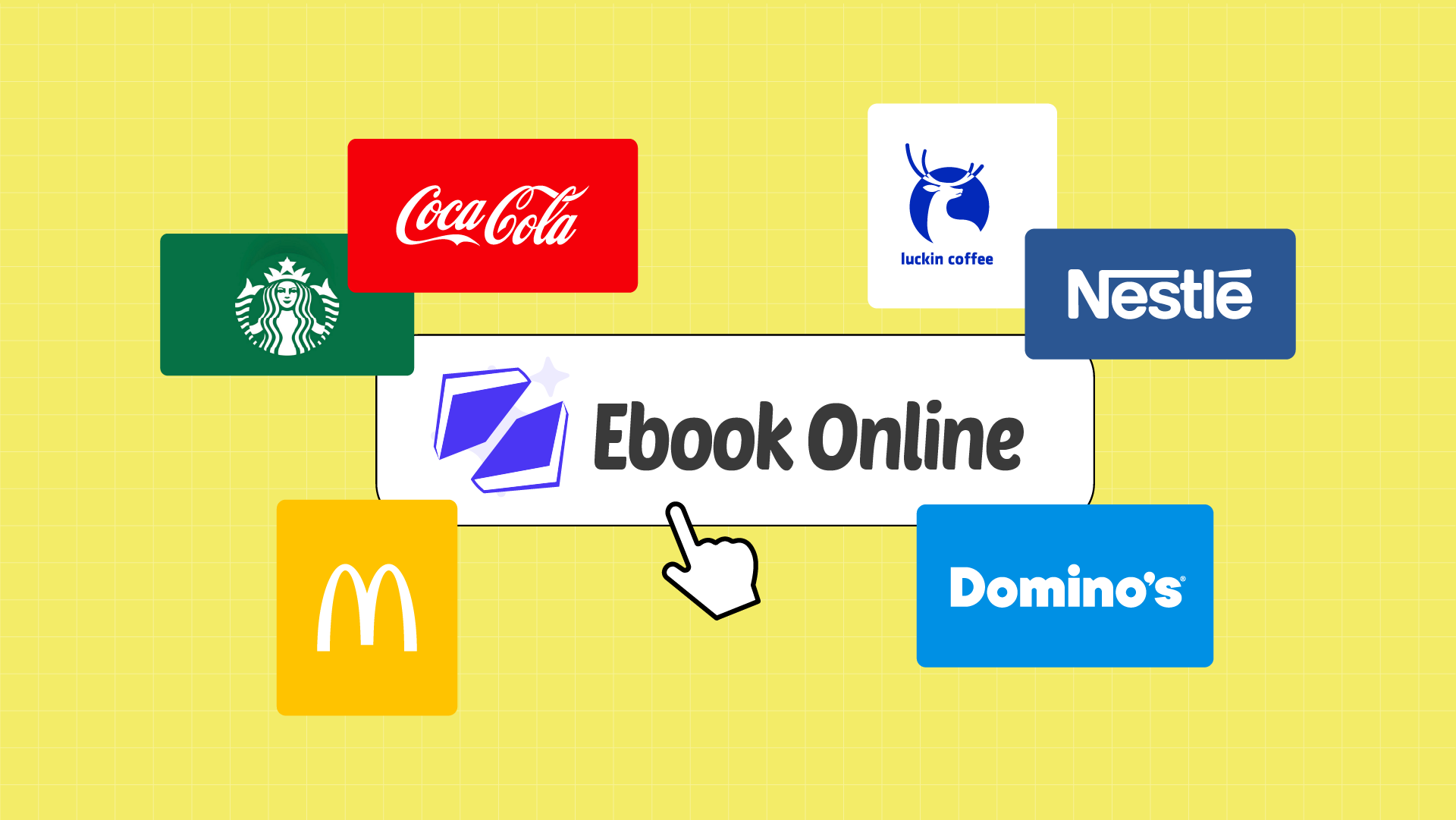McDonald’s stands as a titan in the global fast-food industry, serving approximately 65 million customers every single day through over 41,000 restaurants spread across more than 100 countries. Source.
But sheer size alone doesn’t guarantee staying power. For McDonald’s, mastering this service ecosystem has meant orchestrating countless moving parts: the in-store experience, drive-thru speed, mobile orders, franchise support, marketing resonance, technology integration, and doing so with enough flexibility to adapt to local markets without diluting the core promise.
In this article, we will explore how McDonald’s delivers customer-service excellence in its physical restaurants and its digital channels, how its franchising model, marketing strategy and technology infrastructure shape that success, and how platforms like Sobot can empower other enterprises to build a similar service framework in their own fields.
Origins & The McDonald’s Story

Before McDonald’s became a global symbol of fast, familiar, and affordable food, it was a small barbecue joint with a big idea. In 1940, brothers Richard and Maurice McDonald opened a modest McDonald’s Bar-B-Q restaurant in San Bernardino, California. Source.
By 1948, the McDonald brothers made a bold move that would redefine modern dining: they shut down the restaurant for three months to reinvent their entire operation. With a simplified nine-item menu and clearly defined kitchen stations, food preparation became nearly three times faster than competitors.
In 1954, a 52-year-old milkshake machine salesman named Ray Kroc walked into the brothers’ restaurant, and saw the future. Impressed by their efficiency, Kroc proposed expanding McDonald’s nationwide through franchising.
By 1955, he opened the first McDonald’s franchise in Des Plaines, Illinois, and within a few years, the golden arches were rising across the United States. Source. In 1961, Kroc purchased exclusive rights to the McDonald’s name and system for $2.7 million, about $27 million today when adjusted for inflation. Source.
Franchising Model of McDonald’s and Their Global Growth
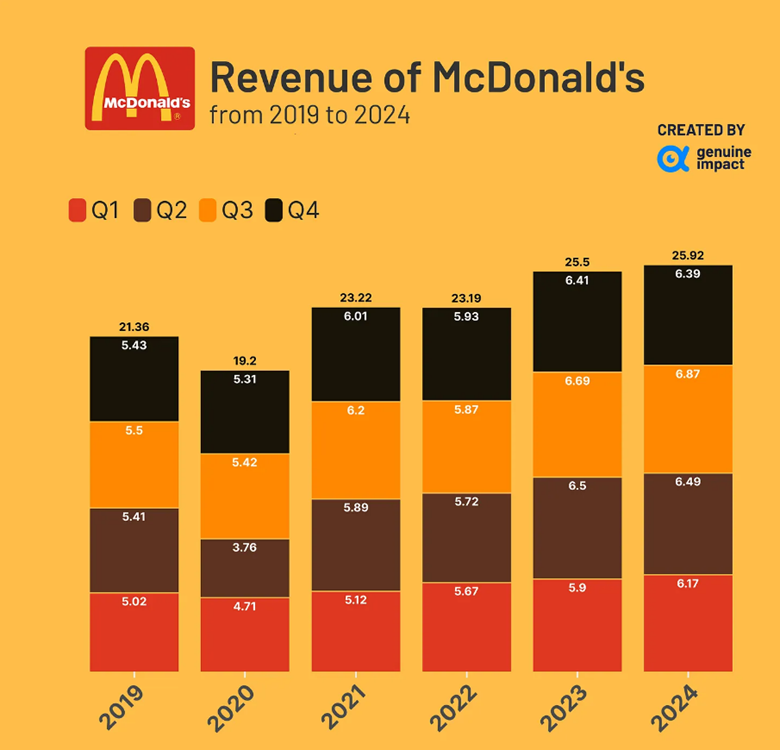
McDonald’s global footprint is immense, with over 44,000 restaurants operating worldwide as of 2024, and an overwhelming 95% of these outlets are owned and operated by franchisees rather than the corporate entity. Source.
This structure allows McDonald’s to maintain a “local ownership, global brand” philosophy: entrepreneurs invest locally and operate under strict brand, service, and training guidelines set by McDonald’s, ensuring consistent standards of taste, speed, and cleanliness worldwide.
The United States alone houses 13,557 restaurants, followed by China with over 6,800, Japan with roughly 2,989, France with about 1,588, the UK with 1,468, Germany with 1,367, and Brazil exceeding 1,200 outlets. Source.
From a financial perspective, McDonald’s Q2 2025 results affirm the strength of this model. The company reported a 6% systemwide sales growth in constant currencies, with comparable sales up 3.8% globally. Quarterly revenue hit around $6.84 billion, with U.S. sales alone up by 2.5% year-over-year. Source.
Customer Service Strategy: Online Innovations
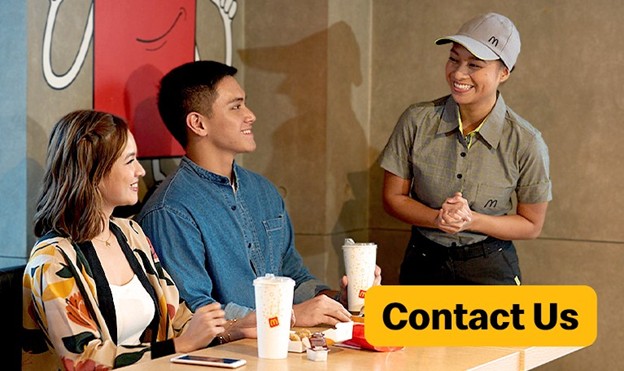
- Automated Chatbots: McDonald’s uses AI-powered chatbots on websites like its UK platform to answer FAQs and guide customers through common issues. These chatbots provide 24/7 basic support and escalate more complex cases to human agents for personalized assistance. By integrating conversational AI into its website experience, McDonald’s minimizes customer wait times while ensuring consistent service quality, a crucial capability for a brand that serves nearly 70 million people daily. The result is a service model that combines efficiency with accessibility, aligning digital responsiveness with McDonald’s long-standing focus on convenience.
- Voice and Phone-Based Assistance: In key markets such as Canada, the company operates a toll-free number (1-888-424-4622) where customers can voice feedback, report issues, or make inquiries directly. These phone lines use interactive voice response (IVR) technology to route calls efficiently, enabling quick resolutions for common problems such as incorrect orders, mobile app errors, or payment disputes.
- Expanded Digital Feedback Platforms: Newly launched digital systems in 2025 enable McDonald’s to collect 20 times more customer feedback than before, feeding real-time insights to quality control and service improvement teams, notably via McDVoice.com.
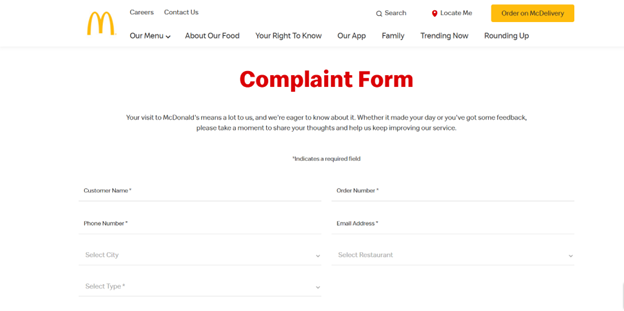
- Sophisticated Loyalty Program: McDonald’s loyalty program has become a cornerstone of its digital ecosystem, enabling deeper customer relationships through data-driven personalization. As of Q2 2025, the program boasts over 185 million active users within a 90-day window across more than 60 markets worldwide. Source
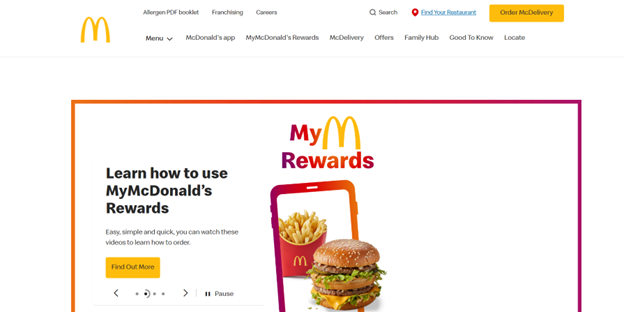
- Smart Ordering and Dynamic Digital Menus: McDonald’s ongoing digital transformation is also visible in its ordering systems. The company has expanded its online ordering infrastructure, offering both app-based and browser-based ordering options to align with consumer demands for speed and convenience. A major innovation came after McDonald’s acquisition of Dynamic Yield, a personalization technology firm that now powers the brand’s AI-driven digital menu boards.
Advanced AI and Data Utilization Across the Enterprise
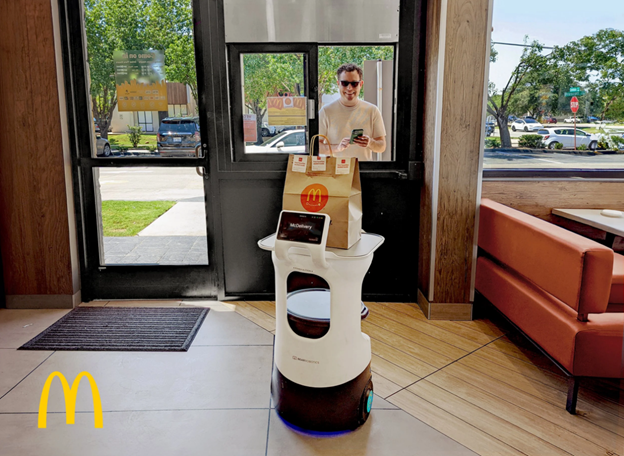
McDonald’s has made bold moves in leveraging artificial intelligence (AI) and advanced data analytics across its global operations. Below is a detailed look at how the enterprise is applying these technologies and the implications for service, efficiency and scale.
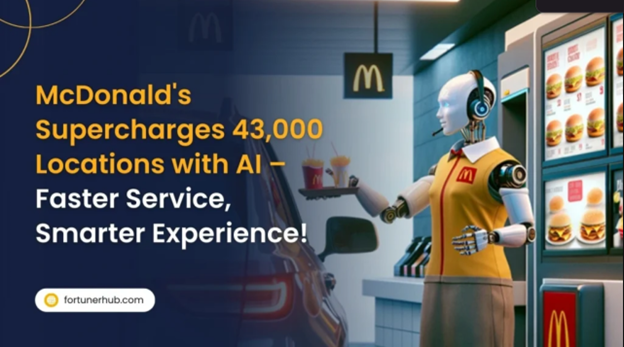
- AI in Drive-Thru Operations: McDonald’s tested AI-driven voice recognition and natural language processing (NLP) in its drive-thrus through its “Automated Order Taker” pilot, developed in partnership with IBM. The goal was to improve order accuracy and reduce staff workload while speeding up drive-thru operations. However, after piloting the system in more than 100 locations, McDonald’s decided to pause the program in mid-2024 due to mixed results and challenges with voice accuracy and contextual understanding.
- Strategic Partnership with Google Cloud: In a multi-year global partnership announced in late 2023, McDonald’s collaborates with Google Cloud to leverage AI and cloud computing. This partnership aims to streamline restaurant operations and improve both customer and employee experiences by connecting millions of data points across McDonald’s digital ecosystem. It enables faster implementation of innovations like the mobile app, self-service kiosks, and AI-powered tools.
- Geofencing Technology for “Ready on Arrival” Orders: McDonald’s uses geofencing technology to notify restaurants when a customer with an order is nearby, significantly reducing wait times- in pilot locations. This technology enhances convenience and throughput, especially important during peak hours.
- AI-Driven Workforce Management and Predictive Analytics: McDonald’s is applying AI and data analytics behind the scenes to optimize everything from kitchen throughput to equipment life-cycles and inventory management. For example, by using edge computing (via Google Distributed Cloud) and connected data from kitchen equipment, staff can detect potential equipment failures before they happen, reducing downtime, maintaining service levels and lowering cost of disruption.
Customer Service Strategy: Offline Innovations
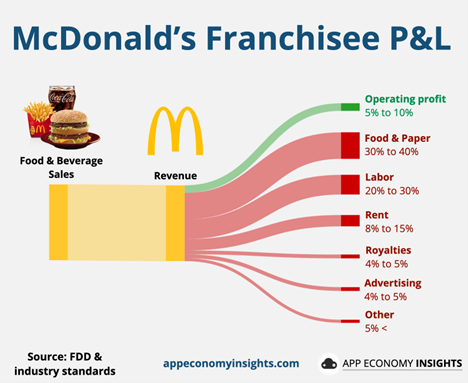
- Loyalty Program Integration Enhancing Offline Experience: The offline and online worlds also converge in the company’s loyalty ecosystem. Through the MyMcDonald’s Rewards program, customers earn and redeem points not just via the mobile app but in-store at counters, self-service kiosks and drive-thrus, effectively linking the digital loyalty layer with the physical experience. McDonald’s has reported that by the second quarter of 2025 it had surpassed 185 million 90-day active loyalty users across 60 markets.
- Emphasis on In-Person Service Quality and Training: Besides technology, McDonald’s heavily invests in staff training focusing on order accuracy, cleanliness, ambience, and customer interaction. Surveys indicate that these factors remain essential drivers of customer satisfaction and loyalty in offline settings, underscoring the company’s holistic commitment to service excellence.
Marketing Campaigns of McDonald’s
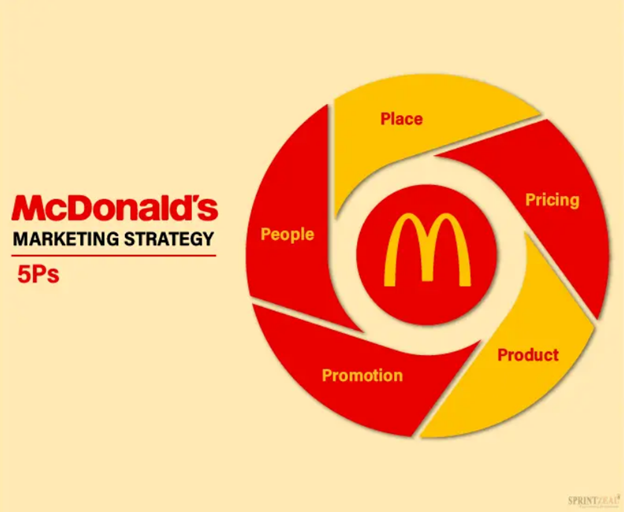
1. Global Branding: The Iconic “I’m Lovin’ It” Slogan

In 2003, McDonald’s launched the “I’m Lovin’ It” campaign, pairing the now-famous five-note “ba-da-ba-BA-BAAA” jingle with a unified global message. This represented the chain’s first time using a single tagline and media campaign simultaneously across more than 100 countries. Source. Over two decades later, the slogan remains embedded in the brand’s identity , a testament to its enduring impact. By choosing a simple, emotionally-driven line (“I’m Lovin’ It”), McDonald’s repositioned itself from being just fast food to a cultural moment , something to enjoy and share , and not only to eat.
2. Engagement Through Promotions: Monopoly Game
Since 1987, McDonald’s Monopoly Game promotion has been a cornerstone marketing campaign, running in over 50 countries. This annual event has consistently driven tremendous in-store traffic during promotional periods, creating excitement and increasing sales by engaging customers with the chance to win prizes, thus reinforcing repeat visits and brand interaction.
3. Celebrity Collaborations & Pop Culture Resonance

In recent years, McDonald’s has leaned hard into cultural relevance by partnering with major celebrities and fan-driven moments. For example, the collaboration with the global K-pop super-group BTS for the “BTS Meal” rolled out in more than 50 markets. Source. The earlier partnership with rapper Travis Scott drove huge buzz and was credited with meaningful sales uplifts across certain regions. These limited-time celebrity meals acted as cultural events, not just menu changes: they harnessed social media, influencer content, merchandise tie-ins, and scarcity to create urgency and fandom around a fast-food transaction.
Enterprise Lessons and Best Practices for Merchants
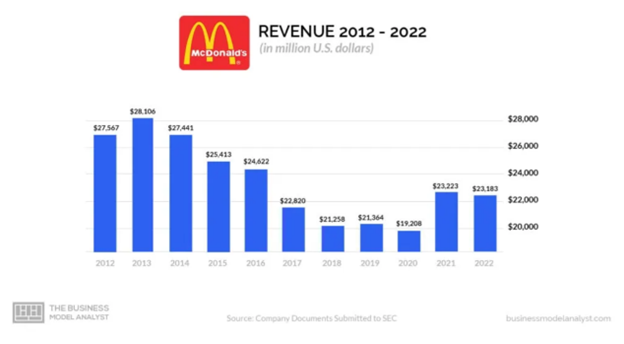
- Integrate AI Thoughtfully: McDonald’s shows that AI works best when it enhances, not replaces, human service. Tools like predictive maintenance and automated ordering improve speed and accuracy, but empathy and real-time judgment still define great customer experiences.
- Leverage Data-Driven Personalization: By using analytics across apps, kiosks, and loyalty programs, McDonald’s turns every interaction into a tailored experience. Merchants can replicate this by using customer data to deliver relevant offers and consistent personalization across touchpoints.
- Listen Beyond Numbers: Customer feedback reveals that perceived value, emotional connection, and brand nostalgia matter as much as convenience. Merchants should go beyond satisfaction scores to understand the why behind customer sentiment.
- Unify Channels Seamlessly: McDonald’s integrates loyalty, digital tools, and in-store experiences into one connected ecosystem. For merchants, aligning online and offline channels ensures a cohesive, reliable brand experience that builds long-term loyalty.
Introducing Sobot – A Partner for Enterprise Customer Service

Sobot is an AI-powered, all-in-one contact center platform designed to help businesses of every size, from small and medium enterprises to global corporations — deliver exceptional customer service across every channel. It unifies communication between online and offline touchpoints, ensuring consistent brand experiences whether customers reach out via chat, phone, or social media. Built for the modern enterprise, Sobot seamlessly connects with Shopify, Amazon, Walmart, Shopee, and Lazada, empowering businesses to manage orders, inquiries, and feedback from one integrated workspace.
Key Features of Sobot
- Omnichannel Support: Sobot centralizes conversations from chat, email, voice, WhatsApp, and social media into a single smart inbox , enabling faster response times and more personalized support across every customer interaction.
- AI & Automation: Its intelligent AI agents and copilots handle repetitive tasks, automate workflows, and maintain response accuracy, freeing human teams to focus on complex or high-value issues.
- Proactive Marketing: Beyond support, Sobot drives engagement with automated marketing campaigns, personalized promotions, and bulk messaging tools , helping enterprises boost conversion and retention.
- Analytics & Reporting: With over 300 reports and built-in feedback systems such as CSAT and NPS, the platform gives leaders real-time insights into performance and customer sentiment, making it easier to track, measure, and continuously improve service quality.
- E-commerce Integrations: Through direct integrations with major e-commerce platforms like Shopify, Amazon, Walmart, Shopee, and Lazada, Sobot lets teams manage orders, refunds, and delivery issues without leaving the dashboard.
- Scalability & Security: Engineered for enterprise-grade operations, Sobot offers secure AI architecture, flexible APIs, and scalability across large teams, with a free 15-day trial that allows businesses to explore its full potential before deployment.
Conclusion
McDonald’s stands as a global benchmark for how technology and tradition can coexist in perfect balance. Its journey reflects a thoughtful integration of AI, automation, and human service, creating a model where digital innovation enhances, not replaces, personal connection.
For enterprises, the McDonald’s story is more than a tale of brand growth, it’s a case study in digital transformation done right.
Ultimately, McDonald’s pursuit of operational excellence and emotional intimacy offers powerful lessons for today’s e-commerce and retail leaders. The message is clear: success in the modern marketplace isn’t about choosing between people or technology, it’s about connecting both seamlessly to create experiences customers truly love.





